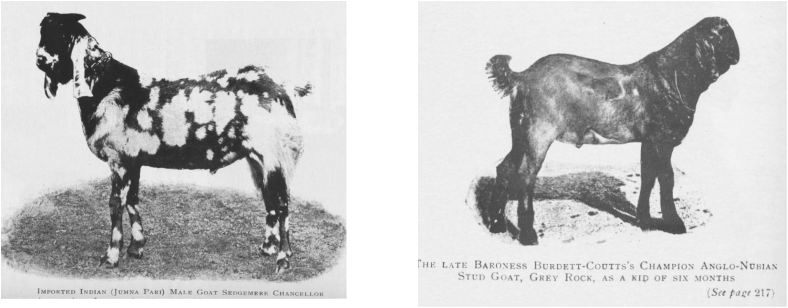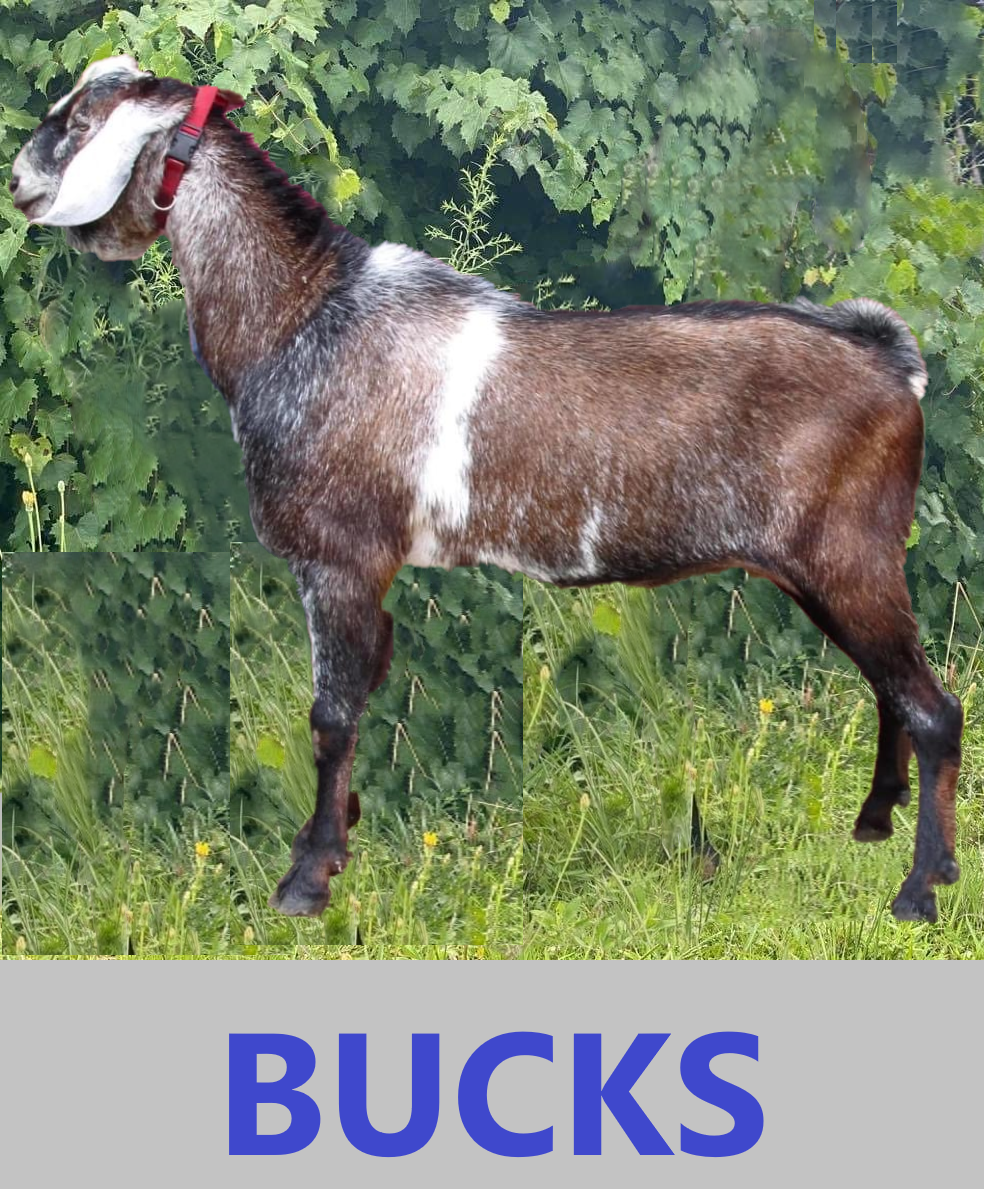The Anglo-Nubian goat, or just Nubian for short is the most sought after dairy goat breed for the unique qualities of their milk and the large quantity they can produce. Their milk is known for having higher butterfat content than other full-sized breeds with a sweet, rich taste; Nubians are the preferred milk producers for makers of cheese, ice cream and butter.
History
Referred to as the Anglo-Nubian Goat in Britain, the breed originated in the area of the British isles comprising Northern Ireland, Scotland, England and Wales along established Mediterranean trade routes of the early 18th century. It is believed Anglo-Nubian goats are the result of crossing the Old English Milch Goat with the Egyptian Zaraibi (Zariby) and Nubian bucks imported from India, and Russia. First used in France, the name “Nubian” is derived from “Nubia”; which describes the region of the Mediterranean along the Nile River between Egypt and central Sudan. As shipboard cold storage had yet to be invented it was common place for vessels to bring live animals along as a source of fresh meat or milk for long voyages. Most tend to credit the P & 0 Steamship company with promulgating these goats along the British Isles as they traveled the trade routes between the Mediterranean and Great Britain. This being the result of the common practice of using animals aboard ship to sell and barter for cash or durable goods during periods of docking and restocking.
These offloaded goats were then bred with British Milch Goats and by the late 1800’s had developed distinctive lop ears, a roman nose, tall frame, and the short coat of the imported goats that led to them being referred to as Anglo-Nubian goats. Considered to have a unique look and excellent production, Holmes- Pegler suggests in The Book of the Goat that ‘the progeny of this combination made it popular, especially at exhibitions, where most of the prizes have been won with it from the earliest days of goat-showing.’ In 1904 three more Nubian males were imported and, together with Sedgemere Chancellor, formed the foundation of the Anglo-Nubian breed.
It was at this time that Sam Woodiwiss, one of the earliest British Goat Society Judges decided to craft a breeding program specifically aimed at producing a registered herd for this new breed. He imported 3 bucks; a tall Egyptian Zairabi buck, a muscular dairy buck from the Chitral region of Pakistan, and a Nubian type hornless buck from Paris Zoo to cross with the native British Milch Goat. The progeny of these three created the first official lines to be registered in the herdbook in 1910.
From here they made their journey across the Atlantic to the United States as early as 1896, where they unfortunately failed to register as an official breed. However, in 1909 Mr. J.R. Gregg of California imported three animals, twin does; Wigmore Brownie and Wigmore Pansy and a buck named Holly Lodge Shingle. He further imported another doe, Luxor Butane, and a buck, Scriventon Bellerphone, in 1913. It is from these original imports by Mr. Gregg that the foundation of the modern Nubian Goat was created. From here the breed continued to grow in popularity and by 1918, Anglo was dropped from the name and forty were officially registered as Purebred Nubians in the United States.
Characteristics of the Nubian Goat
Description:
Nubian goats are a large breed goat with a more robust frame than other dairy breeds. The Nubian breed standard specifies the head as the distinctive breed characteristic with the facial profile between the eyes and the muzzle being strongly convex, often referred to as a “Roman nose.” The ears must be “pendulous,” hanging down and flaring out and forward at their rounded tip and extending at least one inch below the muzzle. Nubians may be any color, solid or patterned. The hair is short, fine and glossy. Nubians may be any color, solid or patterned.
Height to Withers: Bucks average 36 in. (90 cm), does 32 in. (80 cm).
Weight: Minimum—174 lb. (79 kg); Maximum—bucks 309 lb. (140 kg); does 243 lb. (110 kg).
Popular Use: Dual milk and meat breed.
America’s Best Goats for Cheese
Productivity: On average a Nubian Nanny will produce 6-7 lb. milk per day/ or around 2000lbs annually which is around in 300 days in milk; butterfat content is around 5% with 3.5% protein. An important protein in cheesemaking and one of the best benefits of goats milk most Nubians possess genes for high production of alpha s1-casein. Compared to most European dairy breeds, the production of this protein in Nubians is quite high.
Temperament: People friendly, intelligent, and sociable. They wear their emotions with their voices and will call out loudly when they require attention, but will remain peaceful and quiet when content.
Adaptability: A hardy breed of goat they do well in environments of high heat as well as areas with months of freezing weather. The main dislike for Nubian Goats is rain, this is a breed that tends to hate getting wet.
Quote: “Unfortunately for people who like peace and quiet, that nose acts like the bell of a horn. Nubians are noted for loud voices, a tendency to stubbornness, and an unqualified dislike of rain, but the babies are so darned cute it’s easy to overlook the personality flaws.” Jerry Belanger and Sara Thomson Bredesen, Storey’s Guide to Raising Dairy Goats.




